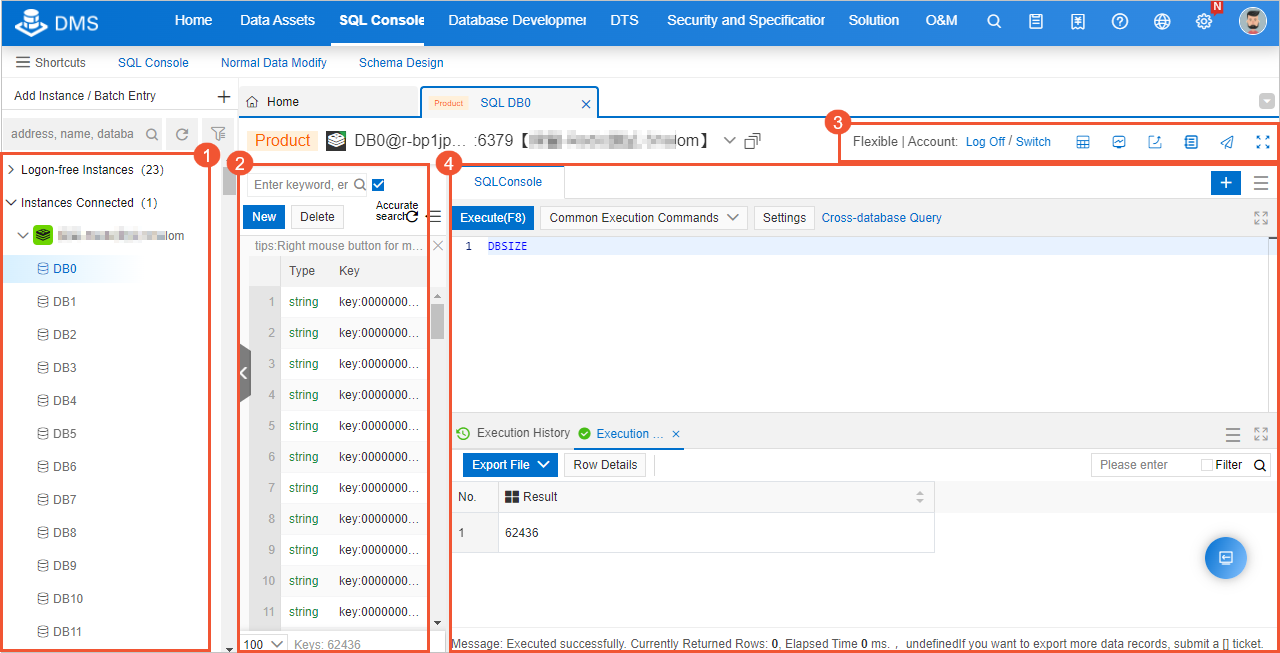- Featured Products
-
 Elastic Compute Service (ECS)
Elastic Compute Service (ECS)
High-performing virtual servers
-
Simple Application Server (SAS)
-
Elastic GPU Service
-
Elastic Desktop Service (EDS)
-
Object Storage Service (OSS)
-
Cloud Enterprise Network (CEN)
-
Web Application Firewall (WAF)
-
Domain Names
- New Products
-
 Container Compute Service (ACS)
Container Compute Service (ACS)
A cloud computing service that provides container compute resources that comply with the container specifications of Kubernetes
-
Secure Access Service Edge (SASE)
-
Intelligent Media Services(IMS)
-
Edge Security Acceleration (ESA)(Original DCDN)
-
Intelligent Media Management
-
DingTalk Enterprise
-
YiDA
-
Alibaba Cloud Model Studio





 icon.
icon.  (DAS shortcut): allows you to view real-time performance data and manage instance sessions. For more information, see
(DAS shortcut): allows you to view real-time performance data and manage instance sessions. For more information, see  (Operation audit): stores all data queries and change records. The feature allows you to query information about a performed operation, such as the user that performed the operation and the time when the operation was performed. For more information, see
(Operation audit): stores all data queries and change records. The feature allows you to query information about a performed operation, such as the user that performed the operation and the time when the operation was performed. For more information, see  (Sharing): allows you to share the database console and commands with relevant personnel. For more information, see
(Sharing): allows you to share the database console and commands with relevant personnel. For more information, see 

















